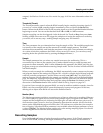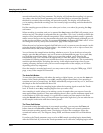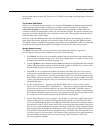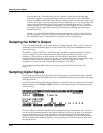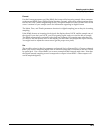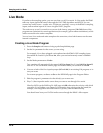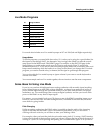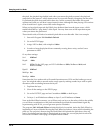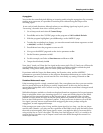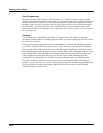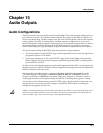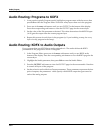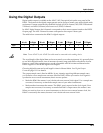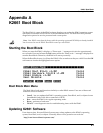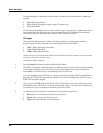
Sampling and Live Mode
Live Mode
14-13
Arpeggiator
You can also do controlled pitch shifting on incoming audio using the arpeggiator. By constantly
sending new note starts, it is possible to bend the pitch without losing the tempo of the
incoming signal.
It can work in both directions, although when you are shifting signals up in pitch, you’re
“borrowing” the audio from a few seconds previous.
1. Go to Setup mode and select 97 Control Setup.
2. Press Edit, and on the CH/PRG page, set the program to 749 LiveMode Default.
3. With the program highlighted, press Edit and go to the AMPENV page.
4. To make the crossfading less choppy, you want short attack and release segments: set Att1
to 0.06/100% and Rel1 to 0.10/0%.
5. Press Exit and save the program to some new ID.
6. Now go to the ARPEG page and set the Active parameter to On.
7. Set the Duration parameter to 99%.
8. For this example, set Order to Simultaneous and Beats to 1/32.
9. Tempo should already be 120.
Now play C 4 and you’ll hear the live signal at the correct pitch. Play G 3 and you will hear the
signal pitched down a fourth. You can use the ribbon or similar controller to bend the pitch
smoothly. Going above unity pitch will cause a jump back into the past.
Experiment with the Tempo, the Beats setting, the Duration value, and the AMPENV
parameters to get useful variations on the program. Remember that because we set the Order to
Simultaneous, you can play several notes at once. And finally, try setting Glissando to On.
Sustained Notes and Loops
If the incoming signal is a single, sustained pitch, like a saxophone note, then you can consider
the Live mode keymap to be playing a normal, looped sound. In this case, the fact that an
upward bend jumps back a few seconds is no big deal because the sound hasn’t changed much
during that time.
With this technique, melodies or chords can be played based on a segment of a live performance.
Keep in mind that, unless your incoming signal is a C, notes and chords played on the K2661
keyboard will be transposed relative to the incoming pitch. Also remember that a rhythm
pitched an octave down will play at half the speed, while one pitched an octave up will play
twice as fast. Fifths produce a 3-against-2 pattern. To keep some sort of relative sync with the
live signal, you may want to experiment with retriggering the notes, perhaps using the
arpeggiator, at some appropriate tempo.
If the passage you want to play is long, and the input signal isn’t so long—say, the sax player
needs to take a breath—you may run into a problem as the K2661 tries to play the buffer where
the audio was interrupted. If the input signal is mono, you might be able to overcome this by
using a delay line to “hold” the signal. The delay line could be part of VAST, or it could be an
external device, but either way its output is sent back to the K2661 through the unused Live
mode input channel.



